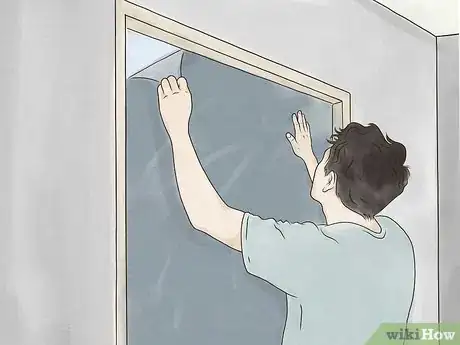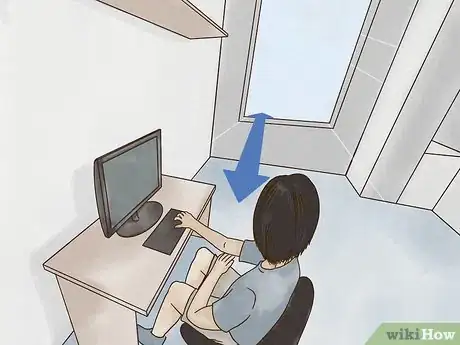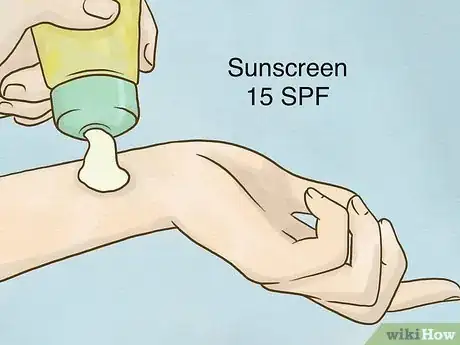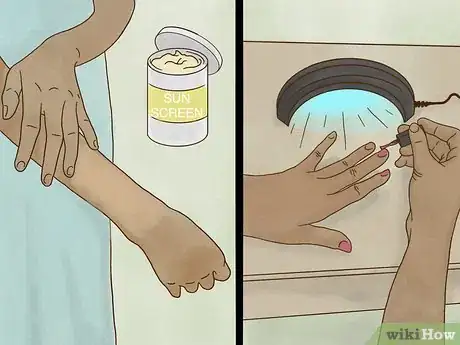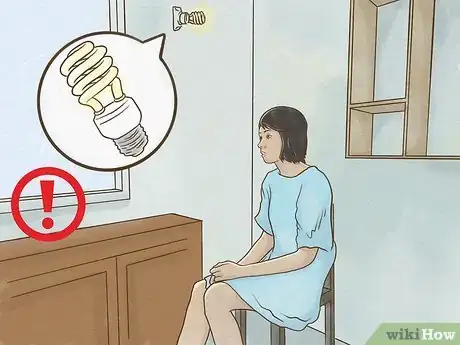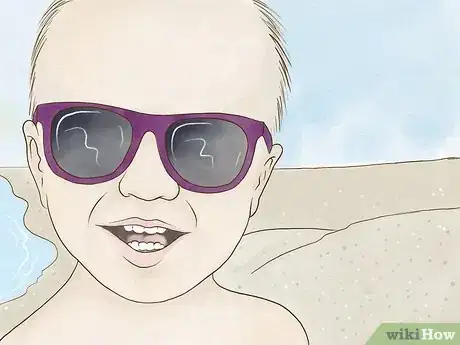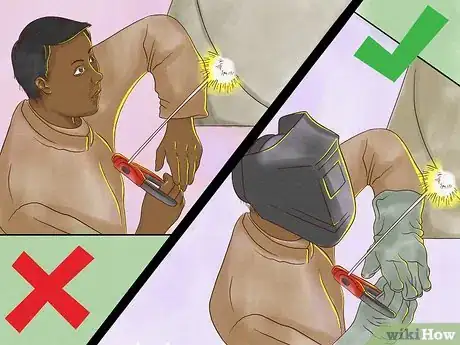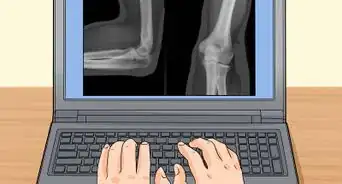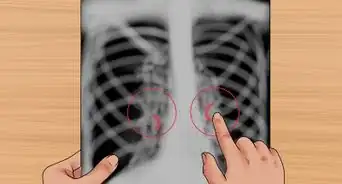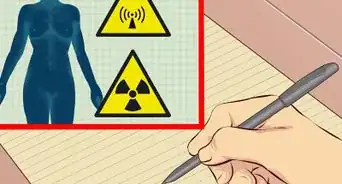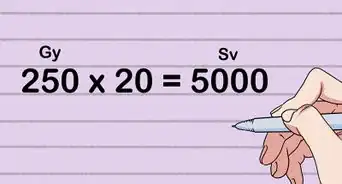This article was medically reviewed by Margareth Pierre-Louis, MD. Dr. Margareth Pierre-Louis is a board certified Dermatologist and Dermatopathologist, Physician Entrepreneur, and the Founder of Twin Cities Dermatology Center and Equation Skin Care in Minneapolis, Minnesota. Twin Cities Dermatology Center is a comprehensive dermatology clinic treating patients of all ages through clinical dermatology, cosmetic dermatology, and telemedicine. Equation Skin Care was created to provide the best in evidence-based, natural skin care products. Dr. Pierre-Louis earned a BS in Biology and an MBA from Duke University, an MD from the University of North Carolina at Chapel Hill, completed a residency in dermatology at the University of Minnesota, and completed a dermatopathology fellowship at Washington University in St Louis. Dr. Pierre-Louis is board certified in dermatology, cutaneous surgery, and dermatopathology by the American Boards of Dermatology and Pathology.
There are 7 references cited in this article, which can be found at the bottom of the page.
This article has been viewed 34,785 times.
You already know it’s important to avoid UV exposure as much as possible. While this is especially important outdoors, you are at risk of potential exposure to UV radiation indoors as well. For instance, sunlight that shines through windows is not as harmful as UV exposure outdoors, but it can still cause harm to your skin and eyes over time. Learn how to protect yourself from exposure to the sun, as well as other artificial UV sources indoors.
Steps
Reducing UV Exposure From the Sun
-
1Apply a protective film to windows. Ordinary glass blocks "short wave" UVB light, but only blocks 50% or less of the more common "long wave" UVA light.[1] [2] Add a UV-protective film to any windows that are not specially built to block UV light. This is especially important for windows near areas where you spend a lot of time, at home, at work, or in the car. The film blocks up to 99.9% of all UV radiation. You can install it yourself or hire professionals to do so.[3]
- You can purchase UV-protective film at home improvement stores or online.
- Note that vehicle windshields are UV resistant, but that side and rear windows are often not. Especially if you spend a lot of time in your vehicle during the day, add a UV protective film to these windows as well.
-
2Adjust your position relative to nearby windows. People who spend extensive periods of time near an open or unprotected window will experience more rapid aging of the skin on that side of their face. If you like to keep your window open, consider sitting a bit further away, and changing your location relative to the window from time to time.[4]Advertisement
-
3Use sunscreen in sunny indoor areas. If you know you are exposed to sunlight despite being indoors, it may be worth wearing sunscreen. If you do, make sure you’re wearing broad spectrum sunscreen with an SPF of 15 or higher.[5]
- Broad spectrum sunscreen, which is necessary to block both major types of harmful UV radiation, includes some combination of the following ingredients: avobenzone (Parsol 1789), ecamsule, oxybenzone, titanium dioxide, and zinc oxide.
- Alternatively, you can use a moisturizer for UV protection indoors, as long as it has broad spectrum protection and an SPF of at least 15.
-
4Purchase a QTemp. A QTemp is a small, battery-powered device that reports the amount of UV radiation in your location. It can be used to alert you when an area is especially high in UV radiation, and prompt you to take the necessary steps to protect yourself with broad spectrum sunscreen in those areas.[6]
- The QTemp device works both indoors and outdoors.
Protecting Yourself From Artificial UV Sources
-
1Avoid using tanning beds. The Center for Disease Control and Prevention (CDC) has determined that indoor tanning is unsafe, as it increases the risk of cancer. Even infrequent use places you at greater risk of developing skin cancer, in addition to other harmful effects of UV radiation.
- In short, tanning beds should not be considered a safe way to tan.
- If you do occasionally use a tanning bed, wear eye protection designed to be used in this scenario.
- For a safer option, use a sun-free tanning lotion.
-
2Apply sunscreen to your hands at the nail salon. The lamps used at nail salons to dry your nails use UV rays to do so. While the amount of radiation and risk of harm is low, it’s worth applying a broad spectrum sunscreen with at least 15 SPF to the back of your hands before getting your nails done.[7]
-
3Use skin protection for occupational exposure. Various industrial and commercial manufacturing equipment requires the use of machinery that exposes the user to UV radiation. Arc welding is a common example, and can cause considerable damage to both your skin and your eyes.[8]
- In short, if you work with or near UV lamps or other equipment that emit UV radiation, always follow the protocols established by law to prevent injury. These will include wearing both skin protection and eye protection.
-
4Don’t sit too close to fluorescent lighting. Fluorescent light bulbs, which are commonly used in various indoor environments, emit small amount of UV radiation. While this radiation does not usually cause significant risk, it’s important not to spend time within a foot (30cm) of the bulbs for more than an hour.[9]
- Though blacklight bulbs do rely on UV light, they do not emit enough radiation to be considered a threat.
-
5Shield yourself from tungsten halogen lamps. These types of lamps are becoming more popular for a range of different indoor uses. They emit enough UV radiation to cause injury at short distances. Filters will greatly diminish this risk.
- Note that light bulbs that emit a harmful amount of UV radiation will be labeled with a cautionary warning.
Reducing Eye Exposure to UV Radiation
-
1Equip your eyeglasses with UV resistant lenses. If you wear eyeglasses, use lenses that help protect your eyes against UV radiation. While most lenses do so to some degree, some require an added treatment for 100% protection. Next time you get new glasses, ask your optometrist about the best option for UV protection.[10]
- Note that UV resistant contacts can help, but cannot fully protect your eyes from UV radiation.
-
2Wear sunglasses more frequently. Whenever you are exposed to sunlight for extended periods of time, even while indoors, it's worth wearing sunglasses. The quality of the sunglasses matters substantially. They should meet ANSI UV requirements, meaning that they block at least 99% of UV rays. They may also be labeled “UV absorption up to 400 nm.”[11]
- If there is not a label regarding UV protection, or if the label says “cosmetic,” the UV protection the sunglasses offer will be partial at best.
- Note that the darkness of the lenses does not correspond with the sunglasses ability to deflect UV rays.
-
3Wear proper eye protection wherever occupational sources of UV radiation are used. Industry and commercial use of machinery that produces UV radiation can quickly and significantly damage your eyesight. For this reason, businesses and unions have strong, specific regulations about the required protection to use in these environments. Follow these regulations at all times.
- In particular, goggles (usually built into a face shield) should be used whenever you’re welding.
- Whatever the eye wear used at your place of work, it should fit snugly to your face, with no gaps through which UV radiation might reach your eyes.
- Protective equipment for these types of uses should be designed specifically for this use. Do not use anything else for this purpose.
Expert Q&A
-
QuestionHow long does sunscreen take to start working?
 Margareth Pierre-Louis, MDDr. Margareth Pierre-Louis is a board certified Dermatologist and Dermatopathologist, Physician Entrepreneur, and the Founder of Twin Cities Dermatology Center and Equation Skin Care in Minneapolis, Minnesota. Twin Cities Dermatology Center is a comprehensive dermatology clinic treating patients of all ages through clinical dermatology, cosmetic dermatology, and telemedicine. Equation Skin Care was created to provide the best in evidence-based, natural skin care products. Dr. Pierre-Louis earned a BS in Biology and an MBA from Duke University, an MD from the University of North Carolina at Chapel Hill, completed a residency in dermatology at the University of Minnesota, and completed a dermatopathology fellowship at Washington University in St Louis. Dr. Pierre-Louis is board certified in dermatology, cutaneous surgery, and dermatopathology by the American Boards of Dermatology and Pathology.
Margareth Pierre-Louis, MDDr. Margareth Pierre-Louis is a board certified Dermatologist and Dermatopathologist, Physician Entrepreneur, and the Founder of Twin Cities Dermatology Center and Equation Skin Care in Minneapolis, Minnesota. Twin Cities Dermatology Center is a comprehensive dermatology clinic treating patients of all ages through clinical dermatology, cosmetic dermatology, and telemedicine. Equation Skin Care was created to provide the best in evidence-based, natural skin care products. Dr. Pierre-Louis earned a BS in Biology and an MBA from Duke University, an MD from the University of North Carolina at Chapel Hill, completed a residency in dermatology at the University of Minnesota, and completed a dermatopathology fellowship at Washington University in St Louis. Dr. Pierre-Louis is board certified in dermatology, cutaneous surgery, and dermatopathology by the American Boards of Dermatology and Pathology.
Board Certified Dermatologist Once you apply sunscreen to your skin, it takes roughly 20 minutes to soak fully into your skin and start protecting it. Keep in mind, you should reapply sunscreen every 2 hours, regardless of the SPF you're using.
Once you apply sunscreen to your skin, it takes roughly 20 minutes to soak fully into your skin and start protecting it. Keep in mind, you should reapply sunscreen every 2 hours, regardless of the SPF you're using.
References
- ↑ http://www.skincancer.org/publications/sun-and-skin-news/winter-2010-27-4/uv-radiation
- ↑ http://www.skincancer.org/prevention/uva-and-uvb
- ↑ http://www.skincancer.org/publications/sun-and-skin-news/winter-2010-27-4/uv-radiation
- ↑ http://www.skincancer.org/publications/sun-and-skin-news/winter-2010-27-4/uv-radiation
- ↑ Margareth Pierre-Louis, MD. Board Certified Dermatologist. Expert Interview. 15 May 2020.
- ↑ http://qtemp.co/is-your-skin-safe-indoors/
- ↑ Margareth Pierre-Louis, MD. Board Certified Dermatologist. Expert Interview. 15 May 2020.
- ↑ http://www.who.int/uv/publications/en/occupational_risk.pdf
- ↑ http://qtemp.co/is-your-skin-safe-indoors/
- ↑ http://www.allaboutvision.com/lenses/coatings.htm
- ↑ https://www.cancer.org/cancer/skin-cancer/prevention-and-early-detection/uv-protection.html
- ↑ Margareth Pierre-Louis, MD. Board Certified Dermatologist. Expert Interview. 15 May 2020.
